7 Ways to Propagate Snake Plants
Hey there, plant lovers! Are you a fan of the trendy and low-maintenance snake plant (Sansevieria)? These architectural beauties are not only stunning but also incredibly easy to propagate. In this blog post, we’ll explore some simple methods to multiply your snake plant collection without breaking the bank. Get ready to unleash your green thumb and create a snake plant oasis in your home or garden!
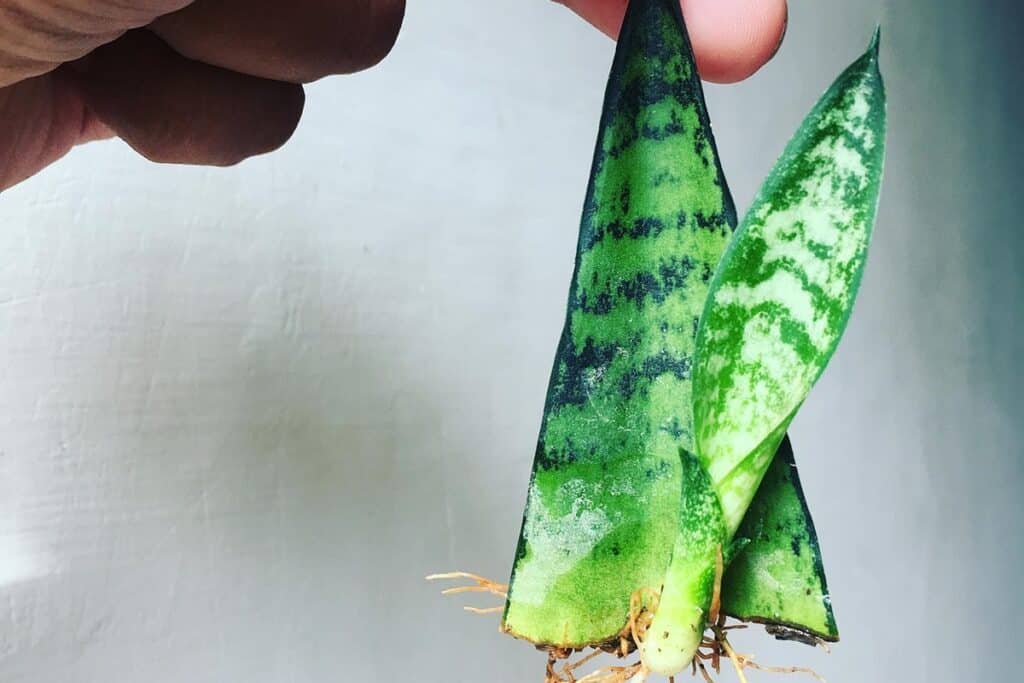
Contents
Water Propagation Method
One of the easiest ways to propagate snake plants is through water propagation. To begin, carefully remove a healthy leaf from the mother plant, cutting it at the base. Allow the cut end to dry for a day or two, forming a callus. Fill a clean glass jar with water and place the leaf cutting in it, ensuring the cut end is submerged. Position the jar in a warm, bright spot with indirect sunlight.
Change the water every few days to prevent bacterial growth. Within a few weeks, you’ll notice roots forming at the base of the cutting. Once the roots are about an inch long, it’s time to transfer the new plant to soil. Plant it in a well-draining potting mix, water sparingly, and gradually acclimate it to brighter light. With patience and care, you’ll soon have a new snake plant to share or enjoy.
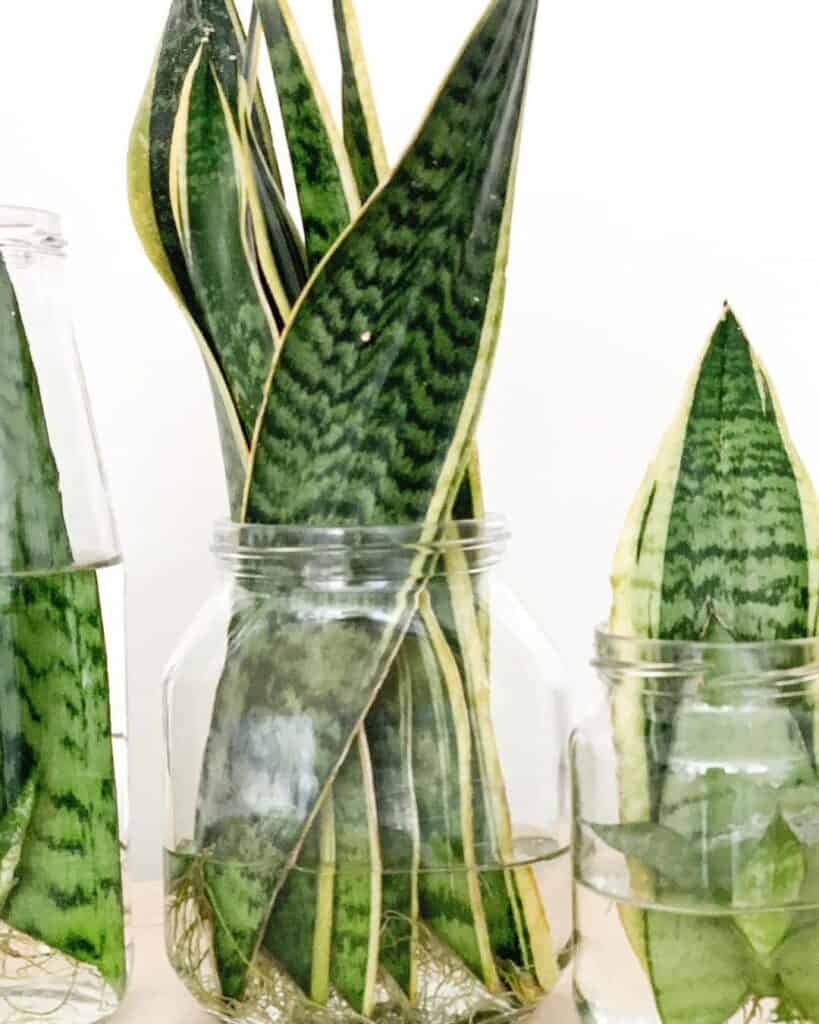
Soil Propagation Technique
Another effective method for propagating snake plants is the soil propagation technique. To begin, select a healthy leaf and cut it into 2-3 inch sections using clean, sharp scissors. Allow the cuttings to callus over for 1-2 days. Prepare small pots with well-draining potting mix, and insert the cuttings about an inch deep, ensuring the correct orientation.
Water sparingly and place the pots in bright, indirect light. Maintain slightly moist soil, but avoid overwatering to prevent rot. In 4-6 weeks, you’ll notice new growth emerging from the soil. Once the new plants are established, you can transplant them into larger pots or share them with friends and family. This method is ideal for those who want to create multiple new plants from a single leaf, making it perfect for sharing the joy of gardening with others.
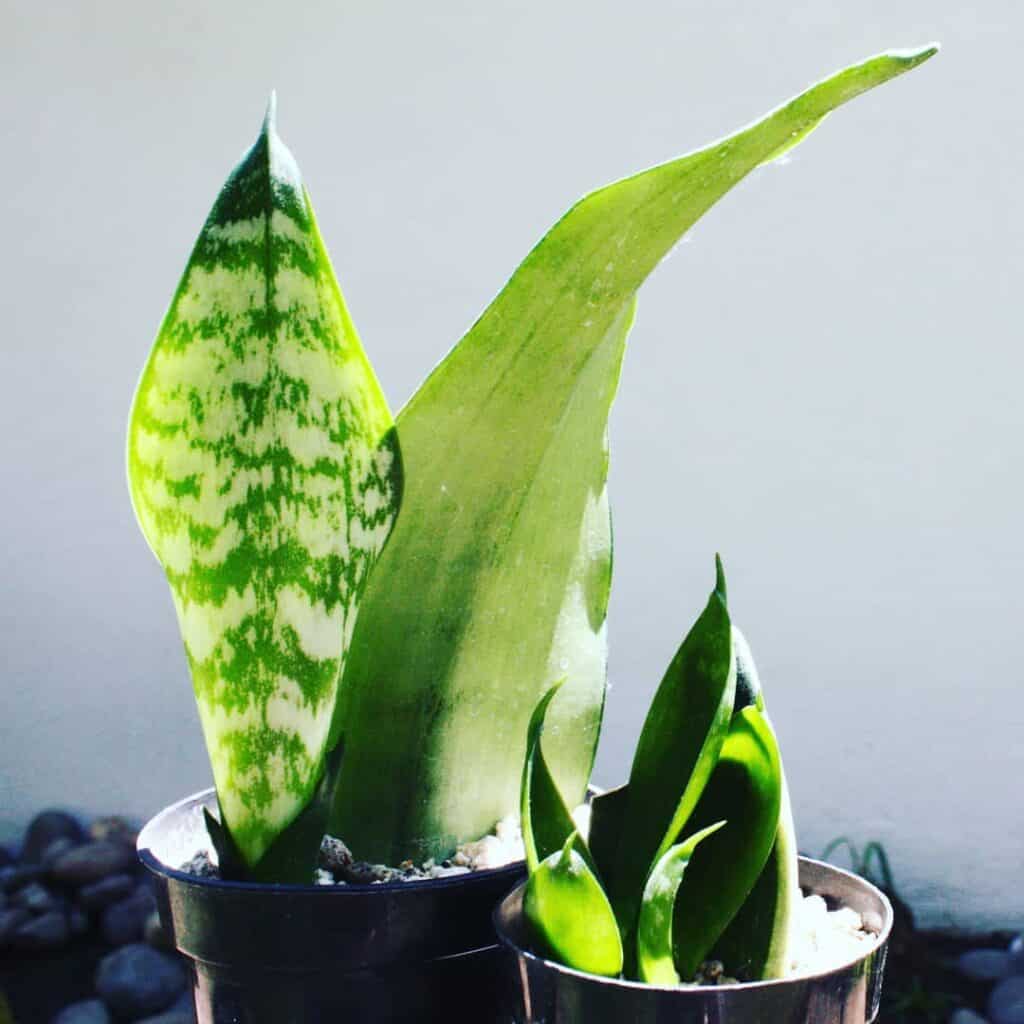
Leaf Cutting Propagation
Leaf cutting propagation offers a simple yet effective way to multiply your snake plant collection. To begin, select a healthy leaf and cut it into 2-3 inch sections using clean, sharp scissors. Allow the cuttings to callous over for a day or two. Next, plant the cuttings vertically in well-draining potting soil, ensuring the cut end is inserted about an inch deep. Water sparingly and place the pot in bright, indirect light.
Maintain slightly moist soil and patience as roots develop over the next few weeks. You’ll notice new growth emerging from the soil in about 2-3 months. This method is ideal for sharing your beloved plants with friends or expanding your own collection. Remember, leaf cuttings may not retain the variegation of the parent plant, but they’ll still produce beautiful, hardy offspring.
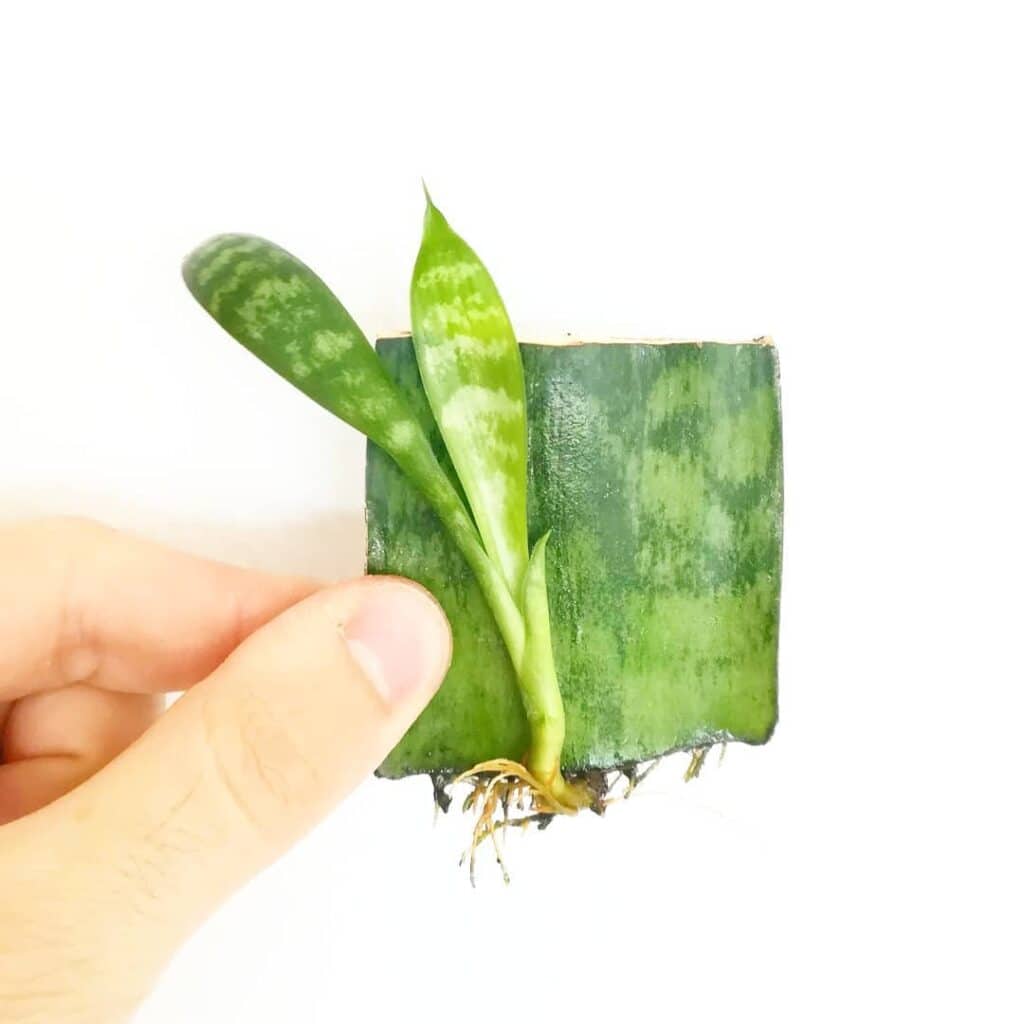
Rhizome Division
Rhizome division stands as a reliable method for propagating snake plants, particularly for mature specimens. To begin, gently remove the plant from its pot and shake off excess soil. You’ll notice thick, horizontal stems called rhizomes connecting the plant’s offshoots. Using a clean, sharp knife, separate these offshoots, ensuring each division has both roots and leaves attached.
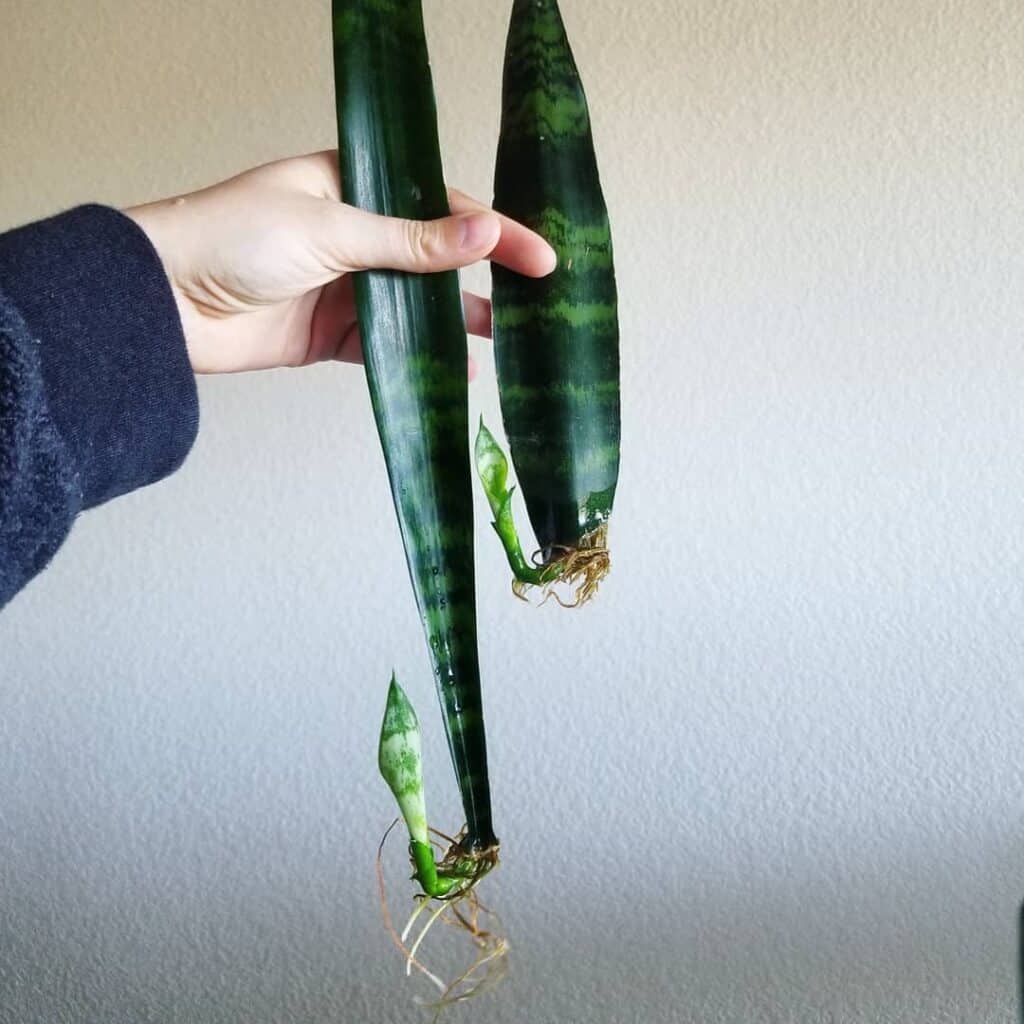
Prepare small pots with well-draining soil mix. Plant each division, burying the roots and supporting the leaves. Water sparingly and place in bright, indirect light. As you care for these new plants, you’re not just multiplying your collection but potentially sharing with others who’d appreciate this hardy species.
Remember to sterilize your tools before and after the process to prevent disease spread. With patience and attention, you’ll soon have multiple thriving snake plants to enjoy or gift.
Pup Separation
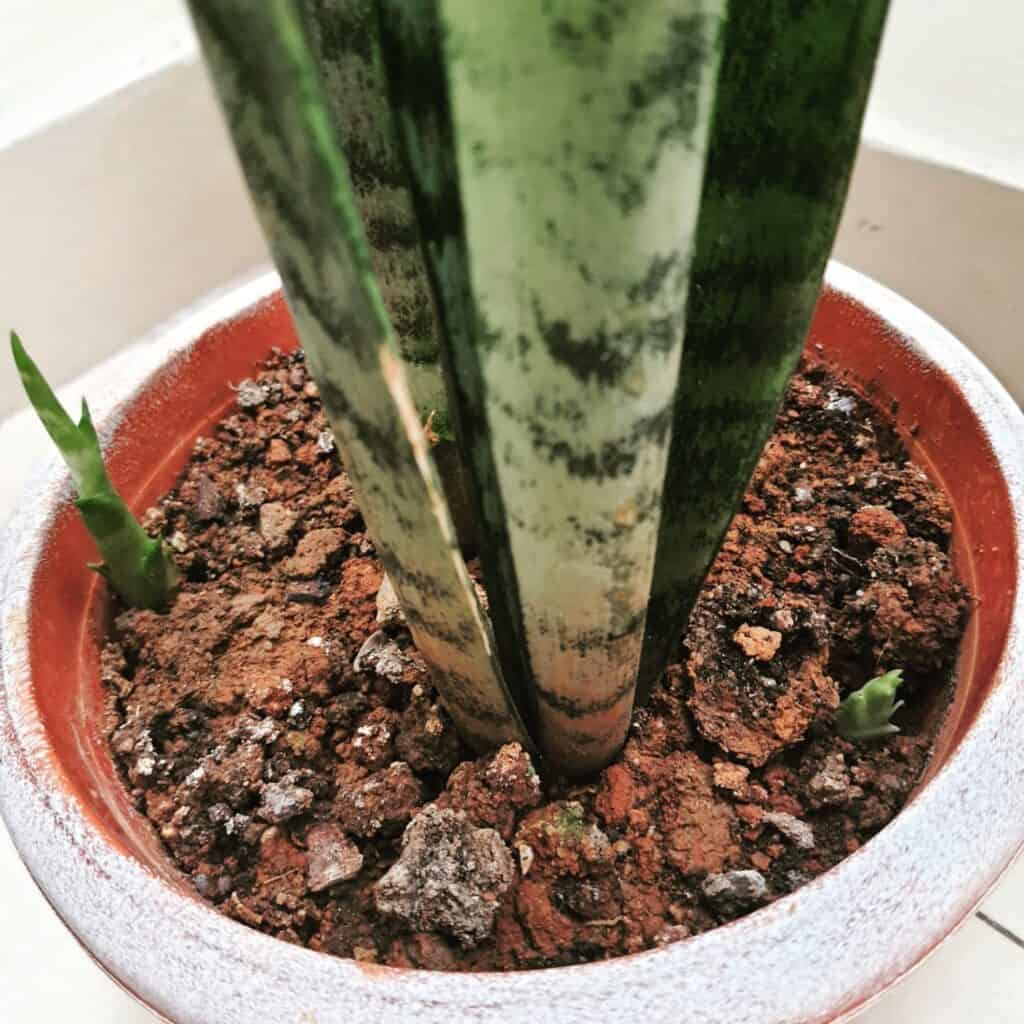
From the base of mature snake plants, small offshoots known as pups often emerge. These pups are perfect for propagation, allowing you to share the plant’s beauty with others. To separate pups, wait until they’re at least 3 inches tall with their own roots. Gently remove the entire plant from its pot and brush away excess soil. Locate the connection between the pup and the mother plant, then carefully cut it with a clean, sharp knife. Guarantee each pup has some roots attached.
Pot the separated pups in well-draining soil, placing them in indirect light. Water sparingly until new growth appears. This method is less invasive than rhizome division and allows the mother plant to remain largely undisturbed. With proper care, these pups will grow into full-sized snake plants, ready to bring joy to new homes.
Propagation in Sphagnum Moss
Sphagnum moss offers an alternative method for propagating snake plants. To use this technique, you’ll need to cut a healthy leaf into sections, each about 2-3 inches long. Dip the cut ends in rooting hormone, then place them vertically in moistened sphagnum moss. Guarantee the cut end is buried about an inch deep.
Keep the moss consistently moist but not waterlogged. Place the container in a warm, bright area with indirect light. You’ll need patience, as it can take several weeks for roots to develop. Once roots appear, you can transplant the new plants into individual pots with well-draining soil.
This method is particularly useful if you’re propagating for others, as it allows for easy transportation of the developing plants. It’s also an excellent choice for those who prefer a soil-free propagation method.
Hydroponics for Snake Plants
While traditional soil-based propagation methods are common, hydroponic cultivation offers an innovative approach to growing snake plants. You can set up a simple hydroponic system using a container filled with water and a nutrient solution. Suspend the snake plant cuttings or offsets in the water, ensuring the roots are submerged while keeping the leaves above the surface. This method allows for faster root development and reduces the risk of soil-borne diseases.
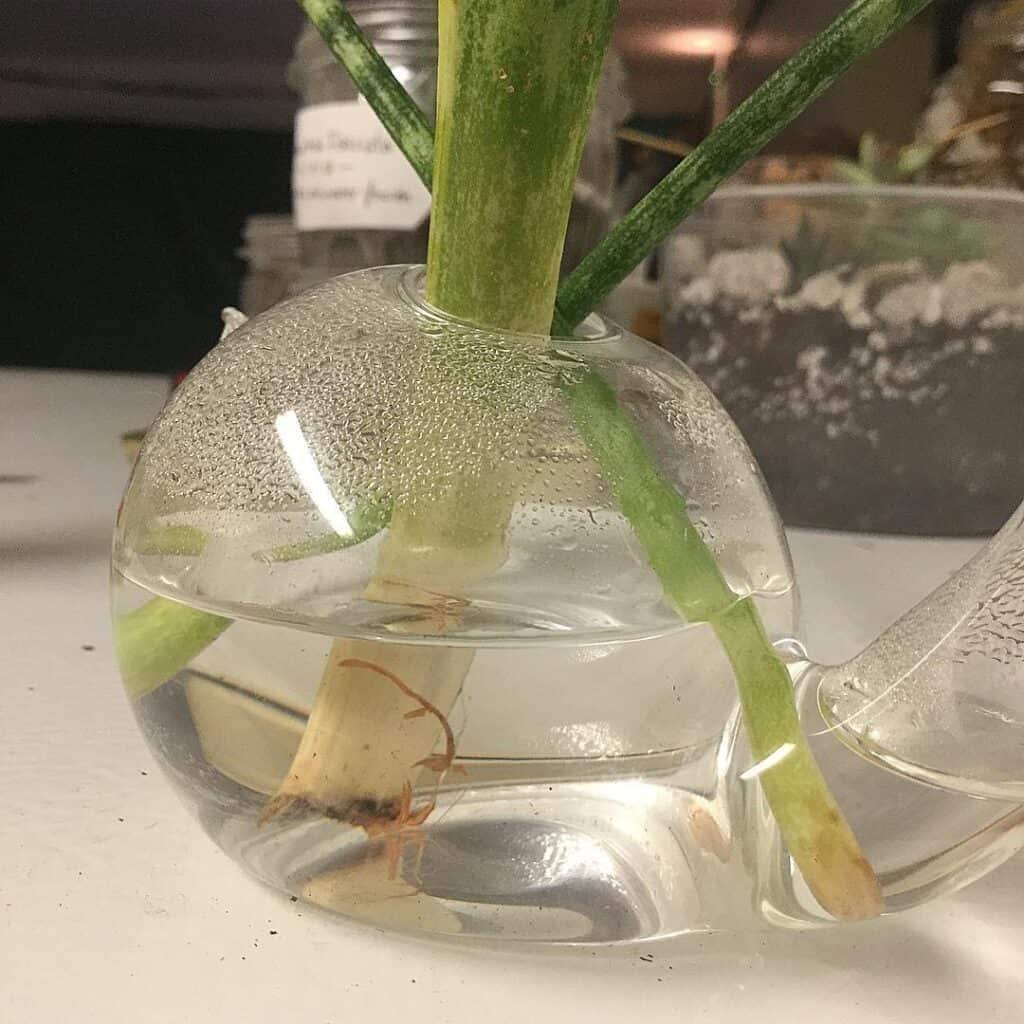
To maintain ideal growth, change the water weekly and monitor nutrient levels. You’ll need to provide adequate lighting and maintain a stable temperature. As the plants grow, you may need to transfer them to a larger hydroponic setup or shift them to soil. This method is particularly useful for those looking to propagate snake plants in small spaces or with limited access to soil.
Propagation Aftercare and Maintenance
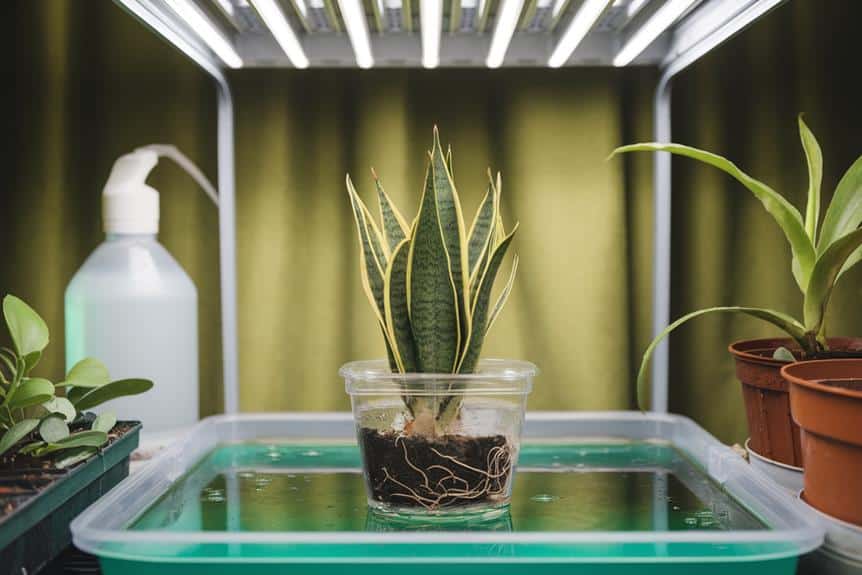
Once you’ve successfully propagated your snake plants, proper aftercare is crucial for their survival and growth. Keep the soil slightly moist but not waterlogged, as overwatering can lead to root rot. Place your newly propagated plants in bright, indirect light to encourage healthy growth. Maintain a warm temperature between 70-90°F (21-32°C) for ideal development.
Don’t fertilize immediately after propagation; wait at least a month before applying a diluted, balanced fertilizer. Monitor your plants closely for signs of stress or pests. Remove any yellowing or dying leaves to prevent disease spread. As your propagated plants establish themselves, gradually introduce them to their permanent growing conditions. Be patient, as it may take several weeks or even months for new growth to appear. With consistent care and attention, you’ll soon have thriving new snake plants to share or expand your collection.
